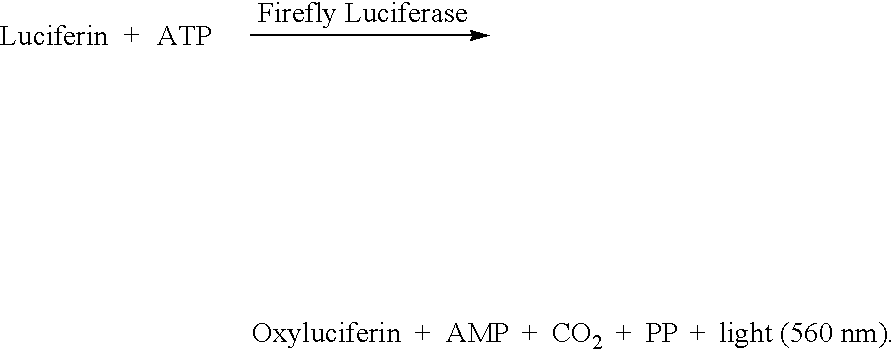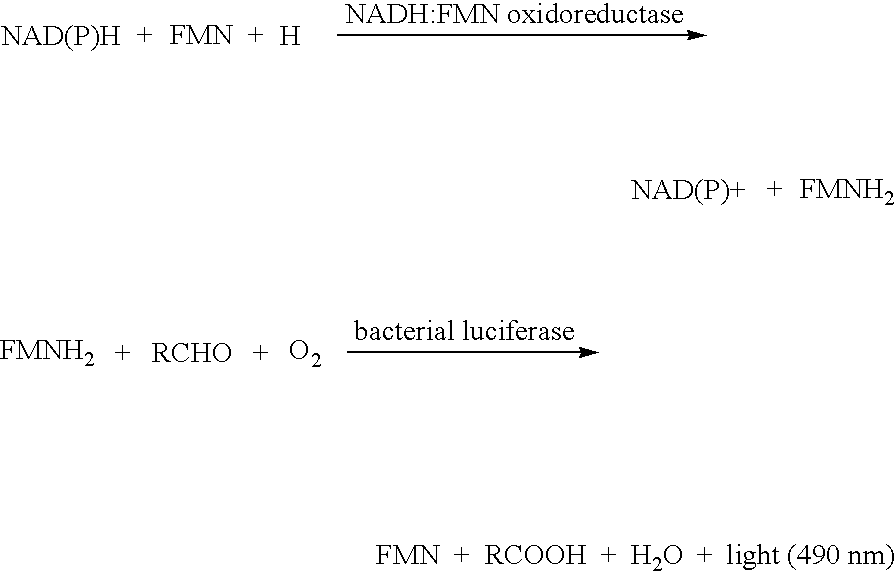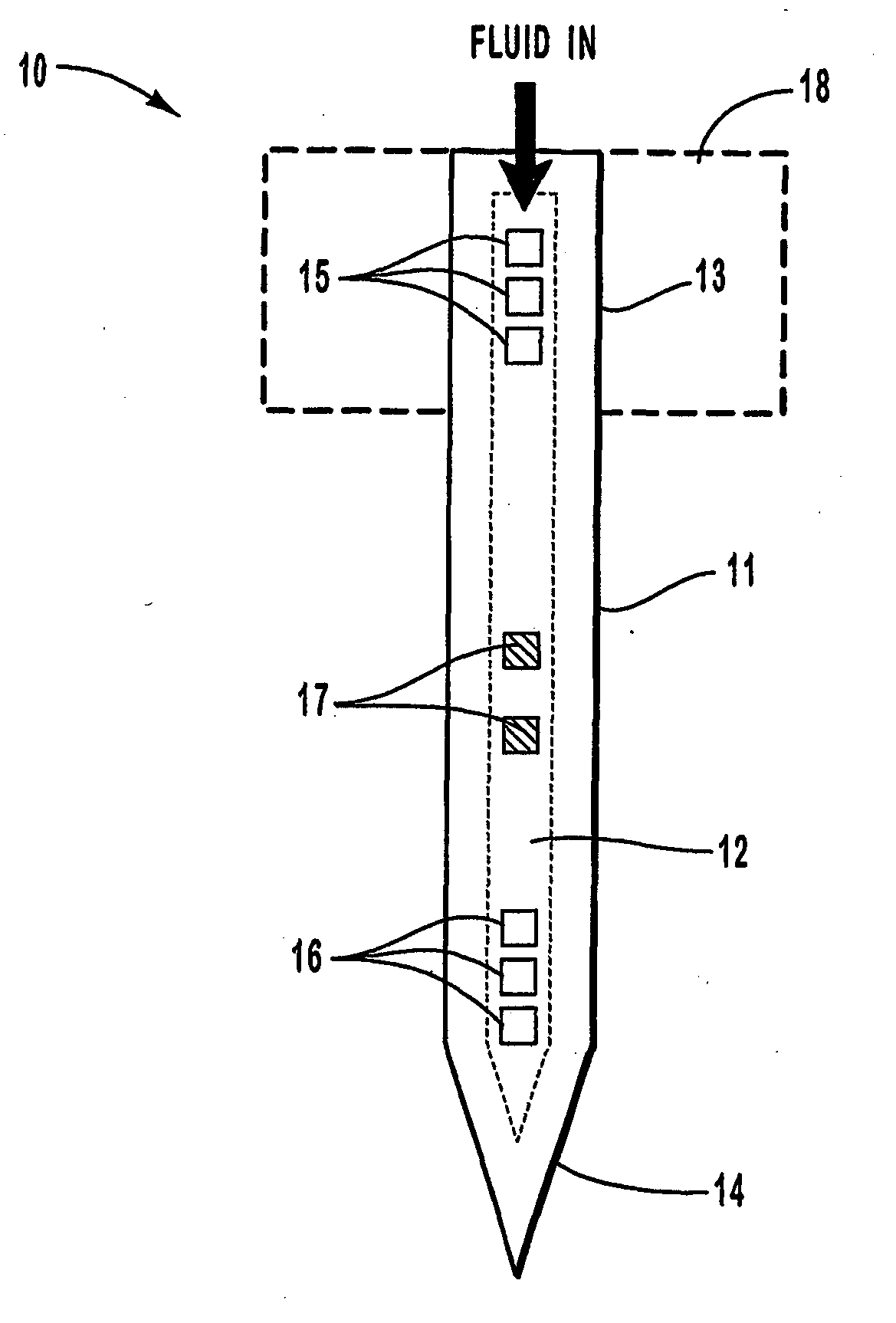Active needle devices with integrated functionality
a technology of integrated functionality and active needles, applied in the field of active needle devices with integrated functionality, can solve the problems of poor mechanical durability, and inability to transmit large amounts of fluid, and achieve the effects of reducing trauma, and reducing the risk of injury
- Summary
- Abstract
- Description
- Claims
- Application Information
AI Technical Summary
Benefits of technology
Problems solved by technology
Method used
Image
Examples
example 2
[0116] Individual hollow metallic microneedles were fabricated with multiple output ports and had an inner cross-sectional area of 140.times.21 .mu.m.sup.2 (width by height) with outer cross-sectional area dimensions of 200.times.60 .mu.m.sup.2. The tip dimensions of the microneedles were less than 15.times.15 .mu.m.sup.2. The length of the tapered portion of the needle shaft was 1 mm and the distance from the tip to the first output port was about 300 .mu.m. The total length of each microneedle was 6 mm, with input port inner dimensions of 140 .mu.m wide and 21 .mu.m high. The wall thickness of each microneedle was about 20 .mu.m, and the output ports were formed with dimensions of 30 .mu.m.sup.2 on the top and bottom of the microneedles. The output ports were separated by 30 .mu.m, and there were 9 ports on the top and 12 ports on the bottom of each microneedle.
[0117] The microneedles were each packaged into a standard Luer-lock fitting using a polymeric medical grade UV-curable a...
example 3
[0118] A preliminary experiment was conducted to assay a glucose via glucokinase and firefly luciferase reactions. The assay was a homogeneous ATP depletion type assay with initial concentrations of glucokinase (80 nano-molar), ATP (10 micro-molar), luciferin (100 micro-molar), and firefly luciferase (0.1 nano-molar) in 0.45 M glycyl glycine buffer at pH 7.8. The results are shown in the graph of FIG. 11, which plots the normalized luminometer bioluminescence, detected two minutes after the rapid mixing of all reactants, as a function of initial glucose concentration. The results suggest that a single step homogeneous assay for glucose can be accomplished without initial dilution of the glucose in the sample.
example 4
[0119] FIGS. 12 and 13 are graphs showing the characteristics for a creatine biosensor. The graph of FIG. 12 plots the normalized bioluminescent signal (in relative light units) as a function of time for several different concentrations of creatine. The bioluminescent signal had a 560 nm wavelength and was measured by a luminometer. The final concentrations of creatine shown are within the physiological serum creatine concentration range.
[0120] FIG. 13 shows the results of an assay experiment for creatine using the creatine kinase and firefly luciferase reactions. The creatine assay was a homogeneous ATP depletion assay (the creatine kinase reaction competes with the firefly luciferase reaction for the ATP). The final assay constituents were buffered in 0.45 molar glycine-glycine buffer at pH 7.8 and the final assay concentrations were the following: 1.4 .mu.M ATP, 71 .mu.M Mg.sup.2+, 14 .mu.M luciferin, 0.3 .mu.M luciferase, 60 .mu.M creatine kinase, and various concentrations of c...
PUM
 Login to View More
Login to View More Abstract
Description
Claims
Application Information
 Login to View More
Login to View More - R&D
- Intellectual Property
- Life Sciences
- Materials
- Tech Scout
- Unparalleled Data Quality
- Higher Quality Content
- 60% Fewer Hallucinations
Browse by: Latest US Patents, China's latest patents, Technical Efficacy Thesaurus, Application Domain, Technology Topic, Popular Technical Reports.
© 2025 PatSnap. All rights reserved.Legal|Privacy policy|Modern Slavery Act Transparency Statement|Sitemap|About US| Contact US: help@patsnap.com



